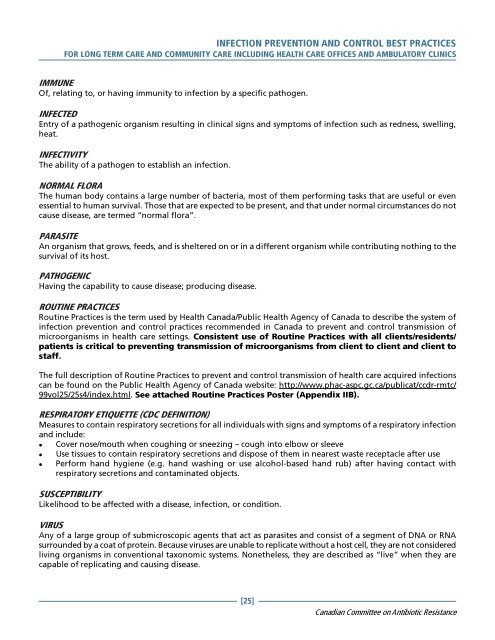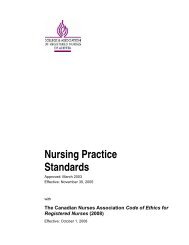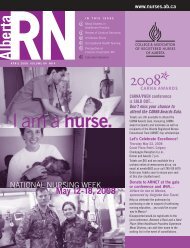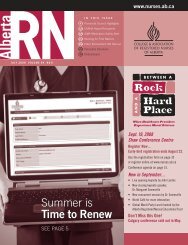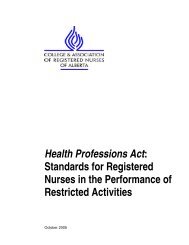Infection Prevention and Control Best Practices - College ...
Infection Prevention and Control Best Practices - College ...
Infection Prevention and Control Best Practices - College ...
Create successful ePaper yourself
Turn your PDF publications into a flip-book with our unique Google optimized e-Paper software.
INFECTION PREVENTION AND CONTROL BEST PRACTICES<br />
FOR LONG TERM CARE AND COMMUNITY CARE INCLUDING HEALTH CARE OFFICES AND AMBULATORY CLINICS<br />
IMMUNE<br />
Of, relating to, or having immunity to infection by a specific pathogen.<br />
INFECTED<br />
Entry of a pathogenic organism resulting in clinical signs <strong>and</strong> symptoms of infection such as redness, swelling,<br />
heat.<br />
INFECTIVITY<br />
The ability of a pathogen to establish an infection.<br />
NORMAL FLORA<br />
The human body contains a large number of bacteria, most of them performing tasks that are useful or even<br />
essential to human survival. Those that are expected to be present, <strong>and</strong> that under normal circumstances do not<br />
cause disease, are termed “normal flora”.<br />
PARASITE<br />
An organism that grows, feeds, <strong>and</strong> is sheltered on or in a different organism while contributing nothing to the<br />
survival of its host.<br />
PATHOGENIC<br />
Having the capability to cause disease; producing disease.<br />
ROUTINE PRACTICES<br />
Routine <strong>Practices</strong> is the term used by Health Canada/Public Health Agency of Canada to describe the system of<br />
infection prevention <strong>and</strong> control practices recommended in Canada to prevent <strong>and</strong> control transmission of<br />
microorganisms in health care settings. Consistent use of Routine <strong>Practices</strong> with all clients/residents/<br />
patients is critical to preventing transmission of microorganisms from client to client <strong>and</strong> client to<br />
staff.<br />
The full description of Routine <strong>Practices</strong> to prevent <strong>and</strong> control transmission of health care acquired infections<br />
can be found on the Public Health Agency of Canada website: http://www.phac-aspc.gc.ca/publicat/ccdr-rmtc/<br />
99vol25/25s4/index.html. See attached Routine <strong>Practices</strong> Poster (Appendix IIB).<br />
RESPIRATORY ETIQUETTE (CDC DEFINITION)<br />
Measures to contain respiratory secretions for all individuals with signs <strong>and</strong> symptoms of a respiratory infection<br />
<strong>and</strong> include:<br />
� Cover nose/mouth when coughing or sneezing – cough into elbow or sleeve<br />
� Use tissues to contain respiratory secretions <strong>and</strong> dispose of them in nearest waste receptacle after use<br />
� Perform h<strong>and</strong> hygiene (e.g. h<strong>and</strong> washing or use alcohol-based h<strong>and</strong> rub) after having contact with<br />
respiratory secretions <strong>and</strong> contaminated objects.<br />
SUSCEPTIBILITY<br />
Likelihood to be affected with a disease, infection, or condition.<br />
VIRUS<br />
Any of a large group of submicroscopic agents that act as parasites <strong>and</strong> consist of a segment of DNA or RNA<br />
surrounded by a coat of protein. Because viruses are unable to replicate without a host cell, they are not considered<br />
living organisms in conventional taxonomic systems. Nonetheless, they are described as “live” when they are<br />
capable of replicating <strong>and</strong> causing disease.<br />
[25]<br />
Canadian Committee on Antibiotic Resistance


